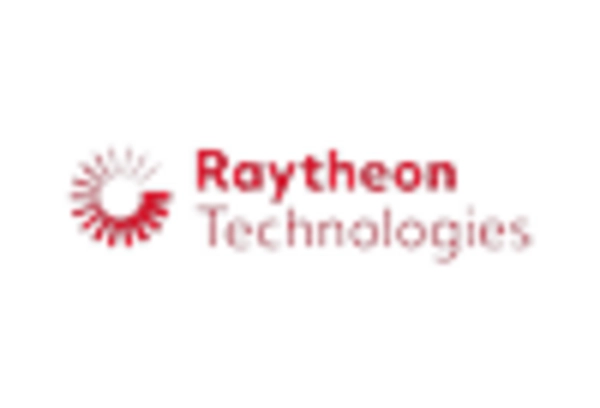Modernization of Naval Fleets
The modernization of aging naval fleets is a critical driver for the naval combat-systems market. Many U.S. naval vessels are reaching the end of their operational lifespan, necessitating upgrades or replacements. The U.S. Navy has outlined plans to invest over $150 billion in new shipbuilding and modernization initiatives by 2030. This includes the integration of advanced combat systems, such as unmanned vessels and next-generation weaponry. As the demand for more capable and versatile naval platforms increases, manufacturers are likely to see a surge in orders, thereby stimulating growth in the naval combat-systems market.
Increasing Geopolitical Tensions
The naval combat-systems market is experiencing growth due to rising geopolitical tensions, particularly in regions such as the South China Sea and Eastern Europe. Nations are investing heavily in their naval capabilities to assert dominance and protect national interests. The U.S. has allocated approximately $200 billion for naval modernization programs over the next decade, reflecting a strategic pivot towards enhancing maritime security. This investment is likely to drive demand for advanced combat systems, including missile defense and surveillance technologies. As countries perceive threats from rival nations, the urgency to upgrade naval fleets becomes paramount, thereby propelling the naval combat-systems market forward.
Investment in Research and Development
Investment in research and development (R&D) is a significant driver of innovation within the naval combat-systems market. The U.S. government has committed substantial funding, estimated at $30 billion annually, towards R&D initiatives aimed at developing cutting-edge technologies. This includes advancements in artificial intelligence, autonomous systems, and advanced materials. Such investments are crucial for maintaining a competitive edge in naval warfare. As new technologies emerge, they are expected to be integrated into existing systems, enhancing operational effectiveness and efficiency. Consequently, the naval combat-systems market is likely to benefit from these ongoing R&D efforts.
Emerging Threats and Asymmetric Warfare
The naval combat-systems market is being shaped by the emergence of new threats, including asymmetric warfare tactics employed by non-state actors. These threats necessitate innovative solutions and adaptive strategies within naval operations. The U.S. military is increasingly focusing on countering these unconventional threats, which may involve the deployment of advanced surveillance systems and rapid-response capabilities. As a result, defense budgets are being reallocated to enhance naval combat systems that can effectively address these challenges. This shift in focus is likely to create new opportunities for growth within the naval combat-systems market.
Focus on Sustainability and Environmental Compliance
The naval combat-systems market is increasingly influenced by a focus on sustainability and environmental compliance. The U.S. Navy has set ambitious goals to reduce its carbon footprint and enhance energy efficiency across its fleet. This includes the development of green technologies and alternative energy sources for naval vessels. As environmental regulations become more stringent, manufacturers are compelled to innovate and adapt their systems to meet these requirements. The push for sustainable practices is likely to drive demand for new naval combat systems that align with these environmental goals, thereby shaping the future landscape of the naval combat-systems market.

















Leave a Comment